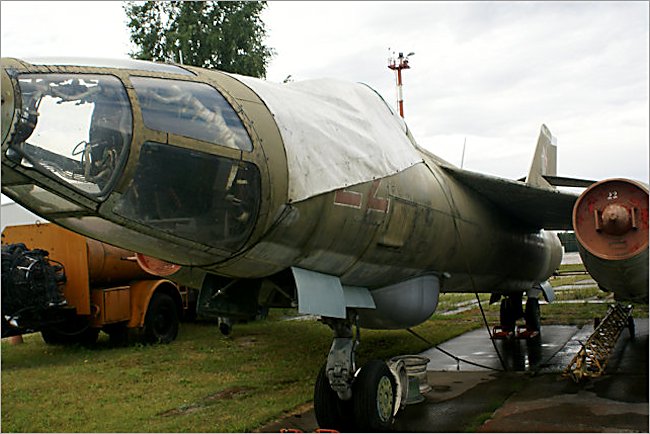Yakovlev Yak-28k Reconnaissance Bomber
The Yakovlev Yak28 was powered by two Tumansky R-11 afterburning turbojets, 46 kN dry, 62 kN with afterburning (10,140 lbf dry, 13,670 lbf with afterburning) each. It had a maximum speed of 1840 km/h (1142 mph) and a range of 2,500 km (1,550 miles). It had a high altitude service ceiling of 16,750 m (54,954 ft).
Its armament included two R-98M (AA-3 'Anab') air-to-air missiles, usually one R-98TM infrared and one R-98RM semi-active radar homing. Occasionally it was fitted with two K-13A (AA-2 'Atoll') short-range missiles. The equivalent NATO aircraft of the time were the Douglas B-66, A3D Skywarrior, Blackburn Buccaneer and F-101 Voodoo.
The Yakovlev Yak-28 was a Cold War Soviet Union swept wing, turbojet-powered combat aircraft that was initially designed as a bomber but was also used as a reconnaissance, electronic warfare, interceptor, and trainer jet aircraft. NATO maintained its habit of assigning Soviet fighters with F based names and bombers with B names. The Yakovlev Yak-28 was unusual as it was given three different code words based on the role it performed. It was known by the NATO reporting names of Brewer, Firebar, Flashlight and Maestro (trainer) respectively. The Yakovlev Yak-28 began to enter service in 1960.

Photograph taken at the Russian Aircraft Museum next to Riga International Airport Latvia
It was first seen by the West at the Tushino air show on May Day 1961. Western analysts initially believed it to be a fighter rather than an attack aircraft - and a continuation of the Yak-25M, at that - and it was designated 'Flashlight'. After its actual role was realized, the Yak-28 bomber series was redesignated "Brewer". The front all-round glass nose gave its role away. It was a tactical bomber with ground controlled targeting system using triangulation from ground based transmitter sites. It was primarily transonic, although Mach 1 could be exceeded at high altitude.
Total production of all Yak-28s was 1,180. The Yak-28P was withdrawn in the early 1980s, but trainer and other versions soldiered on until after the fall of the Soviet Union, flying until at least 1992. The recce and ECM aircraft were eventually replaced by variants of the Sukhoi Su-24.